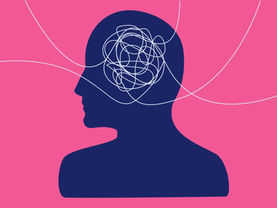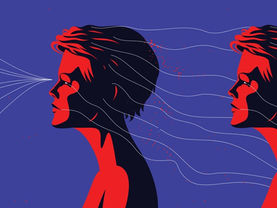What Exactly Are Those Tiny Little Headaches That Trouble Your Sleep?
- Tista Bhatia

- Jul 1
- 2 min read
Updated: Jul 2
Have you ever been disturbed in your sleep with a sharp pain in your head that keeps you awake all night? Those little disturbances that keep you awake or even disturb your everyday activities are called ‘migraines’. So, let’s get to the main point, what exactly are migraines and how they affect us, their causes and their rising especially in teenagers.
A migraine is a complex neurological disorder characterized by recurrent episodes of moderate to severe headache, most often experienced as throbbing or pulsing pain on one side of the head. They can be debilitating and are often accompanied by other symptoms such as:
*Nausea and vomiting
*Sensitivity to light, sound, and sometimes smells
*Visual disturbances (known as aura), such as seeing flashes of light or zigzag patterns
*Fatigue and irritability
*Difficulty concentrating
Migraine attacks can last from 4 to 72 hours if untreated, and their frequency varies between individual to individual. Now let’s get to the point what causes these little disturbances in your head? Both genetic and environmental factors play a role. Common triggers include:
*Hormonal changes (e.g., menstrual cycle)
*Stress or anxiety
*Certain foods (like chocolate, cheese, processed meats)
*Alcohol
* Changes in sleep patterns
*Strong odours, bright lights, or loud noises
*Skipping meals
let’s talk about their rising concerns in teenagers. In 2024, 2023, and 2025, the global prevalence of migraines among teenagers (adolescents) remained relatively stable, with estimates indicating that 7.7% to 9.1% of children and adolescents worldwide experience migraines. This means that, each year, roughly 1 in 10 teenagers globally are affected by migraines. This has been a rising concern in the health care sector for years as migraines in teenagers can cause health issues, isolation, severe headaches, emotional distress and anxiety
While there is currently no cure for migraines, effective management is possible through a combination of medical treatment, lifestyle adjustments, and trigger avoidance. Increased awareness, early diagnosis, and individualized care are key to reducing the burden of migraines and helping those affected lead fuller, healthier lives. If you or someone you know struggles with migraines, don’t hesitate to seek professional guidance—relief and better quality of life are within reach.
Given the rising prevalence, increased awareness and targeted interventions are essential to manage teenage migraines effectively.















Comments